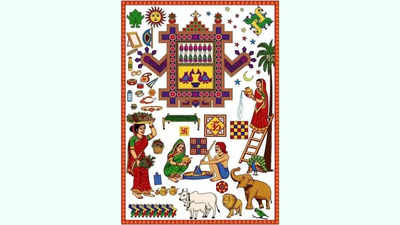- News
- lifestyle
- soul-search
- Ahoi Ashtami 2024: Is Ahoi Ashtami on October 24 or 25, puja vidhi, significance, and all you need to know
Trending
Ahoi Ashtami 2024: Is Ahoi Ashtami on October 24 or 25, puja vidhi, significance, and all you need to know
Ahoi Ashtami, set for October 24, 2024, is when mothers fast for their children's health and longevity. It stems from a legend involving a woman who lost her sons after accidentally killing a lion cub. The festival, important in North India, involves day-long fasting and evening Puja.

The day of Ahoi Ashtami is observed 4 days after Karwa Chauth, when women fast for their husbands, and 8 days before the grand celebration of Diwali.
Ahoi Ashtami 2024
In 2024, as with many other days and festivals, there is also confusion if Ahoi Ashtami vrat should be kept on October 24 or October 25. And to put the dilemmas to rest, it is advised to keep the fasting on October 24.
According to Drik Panchang, “Ahoi Ashtami Thursday, October 24, 2024
Ahoi Ashtami Puja Muhurta – From 05:42 P.M. 06:59 PM
Duration - 01 hour 17 minutes
Evening time to see the stars - 06:06 PM
Krishna Dashami Moonrise time on Ahoi Ashtami day -11:55 PM.”
The story and legend behind Ahoi Ashtami fasting
The start of Ahoi Ashtami fasting and vrat started many centuries ago. According to popular lore, there was once a woman who had seven sons. One day, as she went to the forest to bring soil for her home, the spade she used for digging accidentally hit a lion cub. The cub soon died, and the woman grew worried and went away.
She was devastated about her act killing a life, and to add the sadness, when she returned home she got to know that her sons were missing. For days she couldn't find them and the villagers considered them dead.
One fine day she shared the incident with one elderly woman who told her that the cub's mother had cursed her, leading to the death of her sons. And so, to atone for her sins, she was advised to pray to Ahoi Mata and fast on the day of Ahoi Ashtami.
The mother then followed the advice of the elderly lady and kept a fast on Ahoi Ashtami seeking forgiveness for the accident. Ahoi Mata then helped her unite with her sons, and from that incident onwards Ahoi Ashtami began to be observed and celebrated by mothers.
The importance of Ahoi Ashtami or Ahoi Aathe
Ahoi Ashtami is important and significant for mothers, especially in parts of North India where it is celebrated. Mothers fast all day, from sunrise to sunset, and break their fast after seeing the ‘stars’. It is believed that the blessings of Ahoi Mata make sure that both the mother and her children are protected from misfortune, evil eye, negativity, and ill health.
In some regions, couples who are unable to conceive also keep the Ahoi Mata vrat and take a bath in the Radha Kund, in Vrindavan, and ask for Ahoi Mata’s blessings.
Plus, this year with Ahoi Ashtami there is also Guru Pushya Nakshatra on the same day which means the blessings and prayers will be amplified.
Puja vidhi for Ahoi Ashtami
The rituals and Puja vidhi for Ahoi Ashtami are kind of similar to Karwa Chauth fasting and other fasts observed.
The day starts with mothers waking up early, taking a bath, cleaning the home temple, and placing an image of Ahoi Mata, or drawing it near the temple. Traditionally, women used to paint a figure of Ahoi Mata on the wall with red or white clay, but today, printed posters with the image of Ahoi Mata are used. After the morning puja, women observe a strict fast, usually Nirjala vrat (no food, no water), and avoid using knives, scissors, or sharp objects.
During the evening, when the Puja muhurat is near, mothers gather a matka, uncooked rice, milk, flowers, sweets, and more and gather together for the puja.
After the vrat katha is recited, women wait to spot the stars to break their fast and some also wait for the moonrise which is difficult as the moonrise time is late on the Ashtami day.
The fast is broken with Sattvic food, and no onion or garlic is cooked for the family. Many women also decide to not use any sharp objects, like knives and scissors on this day, and make it a point to not wear white or black colours.
End of Article
FOLLOW US ON SOCIAL MEDIA










